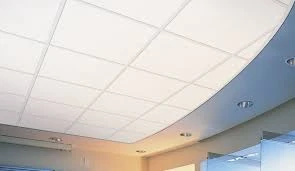- Afrikaans
- Albanian
- Amharic
- Arabic
- Armenian
- Azerbaijani
- Basque
- Belarusian
- Bengali
- Bosnian
- Bulgarian
- Catalan
- Cebuano
- Corsican
- Croatian
- Czech
- Danish
- Dutch
- English
- Esperanto
- Estonian
- French
- German
- Greek
- Hindi
- Indonesian
- irish
- Italian
- Japanese
- Korean
- Lao
- Malay
- Myanmar
- Norwegian
- Norwegian
- Polish
- Portuguese
- Romanian
- Russian
- Serbian
- Spanish
- Swedish
- Thai
- Turkish
- Ukrainian
- Uzbek
- Vietnamese
dec . 04, 2024 16:43 Back to list
suspended ceiling access panel
Understanding Suspended Ceiling Access Panels Features, Benefits, and Installation
Suspended ceiling access panels are essential components in modern building design, providing crucial accessibility for maintenance and inspection while maintaining the aesthetic quality of ceilings. These panels play a pivotal role in various settings, including commercial, industrial, and residential spaces. In this article, we will explore the features, benefits, and installation of suspended ceiling access panels, highlighting their significance in modern construction.
What is a Suspended Ceiling Access Panel?
A suspended ceiling access panel is a removable panel integrated into a suspended ceiling system. It allows easy access to the ceiling void for maintenance of electrical, plumbing, or HVAC systems without needing to disrupt the entire ceiling structure. The panels come in various sizes, materials, and finishes, allowing them to blend seamlessly with the existing ceiling design.
Features of Suspended Ceiling Access Panels
1. Design Versatility Access panels are available in multiple sizes and styles, accommodating different design specifications. They can be manufactured from various materials, including metal, plastic, or gypsum board, ensuring they meet aesthetic and functional requirements.
2. Ease of Access The primary feature of these panels is their easy accessibility, allowing maintenance personnel to reach equipment and utilities quickly. Most panels are designed to be simple to open and close, often with a lift-out mechanism or hinge.
3. Fire Ratings Many access panels come with fire-rated options, providing added safety for commercial buildings. These panels help contain fire and smoke, complying with building codes and ensuring the safety of occupants.
4. Acoustic Performance Some access panels are designed to enhance the acoustic properties of a room, reducing noise transmission between spaces. This feature is particularly beneficial in office buildings, schools, and healthcare facilities.
Benefits of Using Suspended Ceiling Access Panels
1. Maintenance Efficiency One of the most significant advantages of suspended ceiling access panels is the efficiency they bring to maintenance operations. They eliminate the need for extensive ceiling demolition, reducing time and labor costs when repair work is necessary.
suspended ceiling access panel

2. Aesthetic Appeal Unlike traditional ceiling access methods that may disrupt the ceiling's visual harmony, access panels are designed to blend seamlessly with the overall design. This maintains a clean and professional appearance in any setting.
3. Regulatory Compliance In many regions, building codes require accessible ceilings for safety reasons. Using access panels helps ensure compliance with these regulations, avoiding potential legal issues for property owners.
4. Improved Safety Regular maintenance of electrical and HVAC systems is crucial for safety. Access panels facilitate easy access for inspections, helping to identify and address issues before they become significant hazards.
Installation of Suspended Ceiling Access Panels
Installing suspended ceiling access panels is a straightforward process, but it requires careful planning and execution to ensure proper functionality. Here are some essential steps to consider
1. Location Selection Determine the best locations for the access panels based on the systems needing maintenance. Ensure that the panels do not interfere with lighting fixtures or other ceiling elements.
2. Sizing and Material Choose the appropriate size and material of the access panel based on the specific requirements of the ceiling and the intended use. Consider if the panel needs to be fire-rated or if it should match the acoustic properties of the room.
3. Installation Process - Cutting the Ceiling Grid Depending on the panel size, modify the existing ceiling grid to fit the access panel. - Securing the Panel Once cut, secure the access panel in place, following the manufacturer’s instructions regarding fasteners and supports. - Finishing Touches Make sure the panel is flush with the surrounding ceiling to provide the desired aesthetic finish.
Conclusion
Suspended ceiling access panels are vital for maintaining functionality in modern building designs. They offer a blend of accessibility, aesthetic appeal, and safety. By incorporating these panels into building plans, architects and builders can facilitate efficient maintenance while adhering to code requirements and enhancing the overall look of a space. As we continue to advance technologically and prioritize safety in construction, the role of access panels will undoubtedly remain significant in the built environment.
-
Transform Interiors with PVC Gypsum Ceiling: A Stylish, Durable, and Moisture-Resistant SolutionNewsMay.19,2025
-
The Smart Interior Upgrade: Discover the Durability and Versatility of Gypsum Ceiling Access Panel SolutionsNewsMay.19,2025
-
The Smart Choice for Interior Design: Discover the Value of PVC Gypsum Ceiling SolutionsNewsMay.19,2025
-
Mineral Fiber Ceiling Tiles: The Smart Blend of Performance and AestheticsNewsMay.19,2025
-
Mineral Fiber Ceiling Tiles: The Superior Choice Over Gypsum for Sound and Fire SafetyNewsMay.19,2025
-
Mineral Fiber Ceiling Tiles: Eco-Friendly Strength and Style for Every CeilingNewsMay.19,2025







